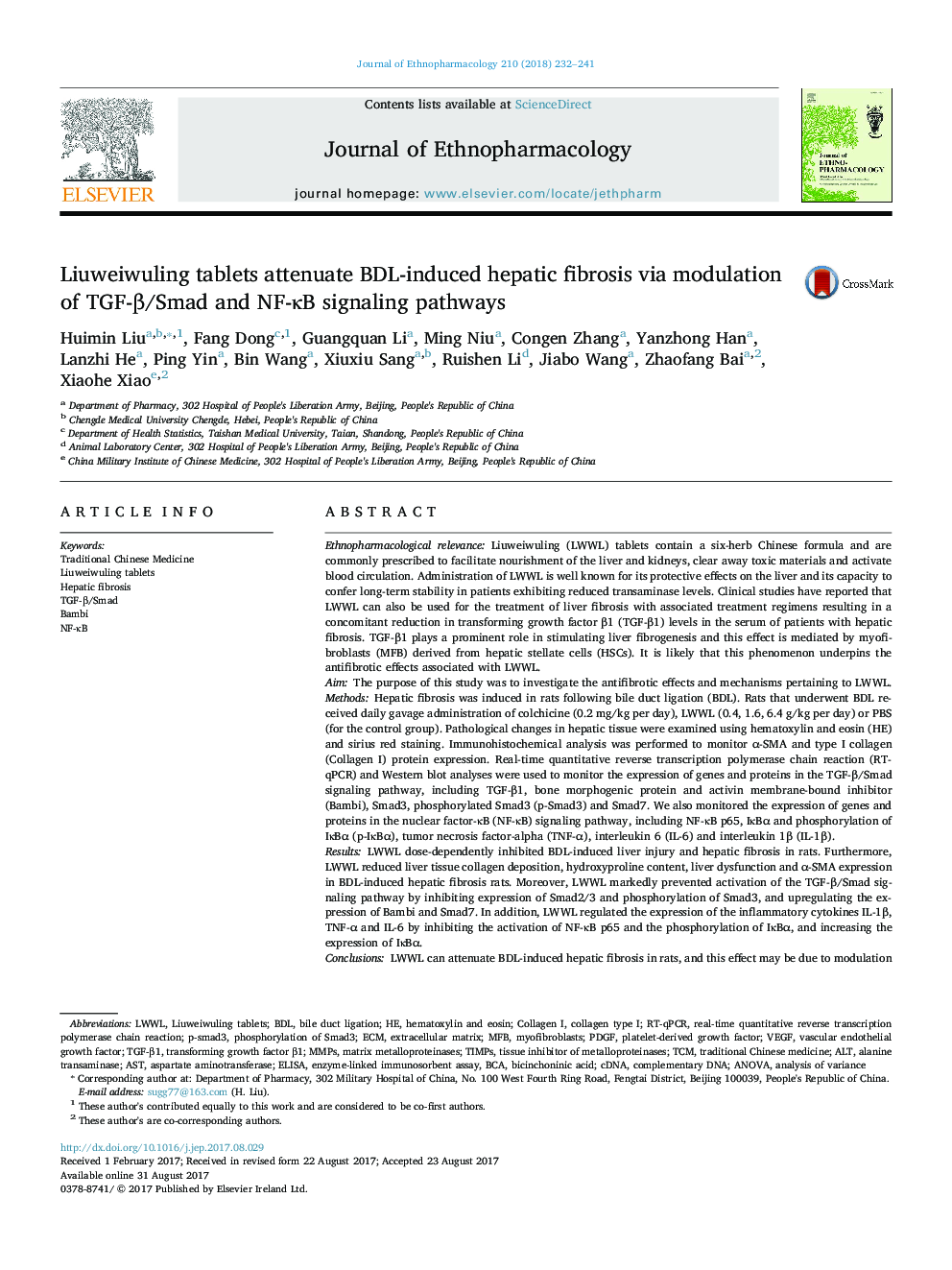| کد مقاله | کد نشریه | سال انتشار | مقاله انگلیسی | نسخه تمام متن |
|---|---|---|---|---|
| 5555943 | 1560352 | 2018 | 10 صفحه PDF | دانلود رایگان |

Ethnopharmacological relevanceLiuweiwuling (LWWL) tablets contain a six-herb Chinese formula and are commonly prescribed to facilitate nourishment of the liver and kidneys, clear away toxic materials and activate blood circulation. Administration of LWWL is well known for its protective effects on the liver and its capacity to confer long-term stability in patients exhibiting reduced transaminase levels. Clinical studies have reported that LWWL can also be used for the treatment of liver fibrosis with associated treatment regimens resulting in a concomitant reduction in transforming growth factor β1 (TGF-β1) levels in the serum of patients with hepatic fibrosis. TGF-β1 plays a prominent role in stimulating liver fibrogenesis and this effect is mediated by myofibroblasts (MFB) derived from hepatic stellate cells (HSCs). It is likely that this phenomenon underpins the antifibrotic effects associated with LWWL.AimThe purpose of this study was to investigate the antifibrotic effects and mechanisms pertaining to LWWL.MethodsHepatic fibrosis was induced in rats following bile duct ligation (BDL). Rats that underwent BDL received daily gavage administration of colchicine (0.2 mg/kg per day), LWWL (0.4, 1.6, 6.4 g/kg per day) or PBS (for the control group). Pathological changes in hepatic tissue were examined using hematoxylin and eosin (HE) and sirius red staining. Immunohistochemical analysis was performed to monitor α-SMA and type I collagen (Collagen I) protein expression. Real-time quantitative reverse transcription polymerase chain reaction (RT-qPCR) and Western blot analyses were used to monitor the expression of genes and proteins in the TGF-β/Smad signaling pathway, including TGF-β1, bone morphogenic protein and activin membrane-bound inhibitor (Bambi), Smad3, phosphorylated Smad3 (p-Smad3) and Smad7. We also monitored the expression of genes and proteins in the nuclear factor-κB (NF-κB) signaling pathway, including NF-κB p65, IκBα and phosphorylation of IκBα (p-IκBα), tumor necrosis factor-alpha (TNF-α), interleukin 6 (IL-6) and interleukin 1β (IL-1β).ResultsLWWL dose-dependently inhibited BDL-induced liver injury and hepatic fibrosis in rats. Furthermore, LWWL reduced liver tissue collagen deposition, hydroxyproline content, liver dysfunction and α-SMA expression in BDL-induced hepatic fibrosis rats. Moreover, LWWL markedly prevented activation of the TGF-β/Smad signaling pathway by inhibiting expression of Smad2/3 and phosphorylation of Smad3, and upregulating the expression of Bambi and Smad7. In addition, LWWL regulated the expression of the inflammatory cytokines IL-1β, TNF-α and IL-6 by inhibiting the activation of NF-κB p65 and the phosphorylation of IκBα, and increasing the expression of IκBα.ConclusionsLWWL can attenuate BDL-induced hepatic fibrosis in rats, and this effect may be due to modulation of the NF-κB-dependent inflammatory response and activation of HSC and TGF-β/Smad-mediated synthesis and degradation of Collagen I.
291
Journal: Journal of Ethnopharmacology - Volume 210, 10 January 2018, Pages 232-241